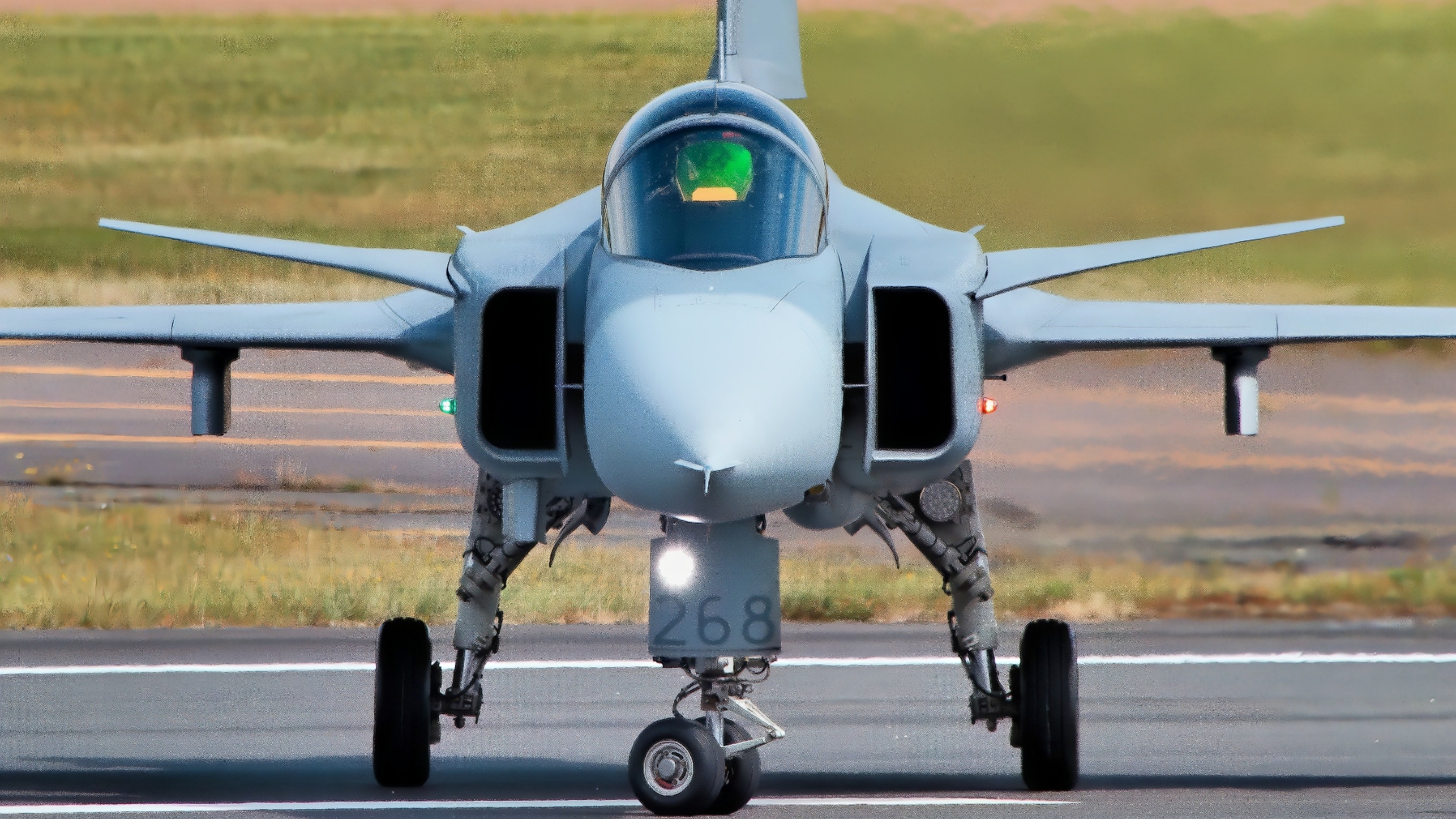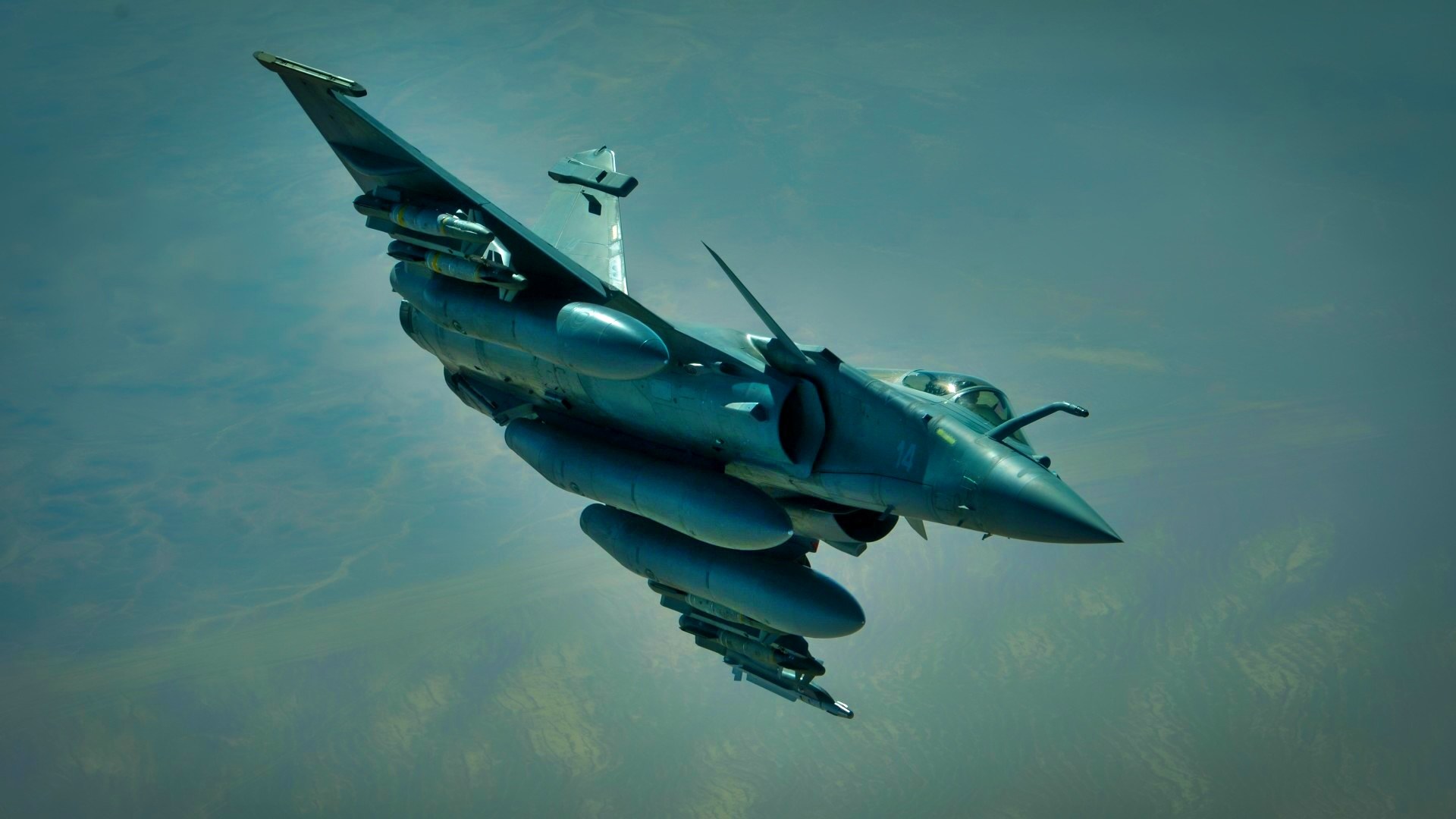Key Points and Summary – A comparison between France’s Dassault Rafale and Sweden’s Saab JAS 39 Gripen E pits two top European 4.5-generation fighters against each other.
-The twin-engine Rafale is larger, carrier-capable, boasts a superior electronic warfare suite (SPECTRA), and carries a heavier payload, giving it an edge in BVR combat and strike missions.

A French Dassault Rafale receives fuel from a KC-10 near Iraq, Oct. 26, 2016. The Dassault Rafale is a twin-engine, multi-role fighter equipped with diverse weapons to ensure its success as a omnirole aircraft. The Rafale has flown in combat missions in several countries including Afghanistan, Libya, Syria and now it’s supporting the liberation of Mosul in Iraq. (U.S. Air Force photo by Senior Airman Tyler Woodward)
-The single-engine Gripen E is lighter, more agile, significantly cheaper to operate, and excels in STOL operations, potentially giving it an advantage in close-range dogfights.
-Both feature advanced avionics and can employ the Meteor missile. Ultimately, the superior fighter depends heavily on the specific combat scenario.
Dassault Rafale vs. JAS 39 Gripen E: Which European Fighter Jet Is Better?
France and Sweden are currently tied as the premier fighter jet manufacturers in Europe (excluding Russia). The Dassault Rafale is one of France’s most advanced fighters, featuring advanced avionics, a high-performance powerplant, and lethal weaponry.
Not to be outdone, Sweden has been aggressively marketing its JAS 39 Gripen fighter jet, which boasts capabilities similar to those of its rivals.
Both aircraft are advanced fourth-generation multirole fighters, but which is superior?
A Fighter Duel: Gripen vs. Rafale
The JAS 39 Gripen, developed by Sweden’s Saab, is a lightweight, single-engine multirole fighter designed with cost-efficiency, modularity, and ease of maintenance in mind. It was built to operate from short, austere runways, including highways, and to be easily maintained by small ground crews.
The Gripen is intended to provide a high level of capability at a relatively low cost, making it attractive to smaller air forces or those with limited defense budgets. The latest variant, the Gripen E, incorporates a more powerful engine, an AESA radar, and advanced electronic warfare systems, bringing it closer in capability to heavier fighters.
In contrast, the Dassault Rafale is a twin-engine, carrier-capable multirole fighter developed by France’s Dassault Aviation. It was designed to fulfill a wide range of missions, including air superiority, deep strike, reconnaissance, and nuclear deterrence.

Dassault Rafale Fighter in India. Image Credit: Creative Commons.
The Rafale is a heavier and more complex aircraft, with a strong emphasis on survivability, sensor fusion, and electronic warfare. It is capable of operating from both land bases and aircraft carriers and has been extensively used in combat operations by the French Air Force and Navy.
Avionics
When it comes to avionics and sensors, both aircraft are equipped with advanced systems.
The Gripen E features the Selex ES Raven ES-05 AESA radar, the Skyward-G infrared search and track (IRST) system, and the Arexis electronic warfare suite.
Its cockpit includes a wide-area display, voice control, and a helmet-mounted display (HMD).
The Rafale, on the other hand, is equipped with the Thales RBE2-AA AESA radar, the OSF IRST system, and the highly regarded SPECTRA electronic warfare suite, which provides jamming, threat detection, and decoy capabilities.
The Rafale also features a glass cockpit, voice commands, and the Scorpion HMD.
While both aircraft have excellent sensor suites, the Rafale’s SPECTRA system is widely considered one of the most advanced electronic warfare systems in service, giving it a significant edge in survivability and situational awareness.
However, the Gripen’s avionics architecture is highly modular and open, making it easier to upgrade and integrate with new systems and weapons.

JAS 39 Gripen Front and Center. Image Credit: Creative Commons.
Engine Performance and Weaponry
In terms of airframe and performance, the Rafale is larger and more potent than the Gripen. It has a maximum takeoff weight of around 24,500 kilograms compared to the Gripen E’s 16,500 kilograms.
The Rafale is powered by two Snecma M88-2 engines, providing a combined thrust of approximately 34,000 pounds, while the Gripen E uses a single General Electric F414G engine producing around 22,000 pounds of thrust.
Both aircraft can reach speeds of around Mach 2, and both are capable of supercruise, although the Rafale can do so with a heavier weapons load. The Gripen has a slightly higher service ceiling, while the Rafale has a longer combat range and greater payload capacity.
In terms of armament, the Rafale has a clear advantage in payload capacity and variety. It has 14 hardpoints (13 on the carrier-based version) and can carry up to 9,500 kilograms of weapons.
It is compatible with a wide range of air-to-air, air-to-ground, and anti-ship munitions, including the Meteor and MICA missiles, the SCALP EG cruise missile, the AASM Hammer precision-guided bomb, and the AM39 Exocet anti-ship missile.
It also has a nuclear strike capability with the ASMP-A missile. The Gripen E has 10 hardpoints and a maximum payload of around 7,200 kilograms. It can carry the Meteor, IRIS-T, and AIM-120 AMRAAM for air-to-air combat, as well as the Taurus KEPD 350 cruise missile, GBU-series bombs, and the RBS-15 anti-ship missile.
Which Fighter Wins in 4 Words? Gripen Looks Pretty Dangerous
In a BVR engagement, the outcome would depend heavily on detection range, missile performance, and electronic warfare capabilities.
Both aircraft can launch the Meteor, one of the most capable BVR missiles in the world.
However, the Rafale’s SPECTRA suite may give it an edge in detecting and jamming threats, while the Gripen’s smaller size and advanced EW systems could help it evade detection.
Overall, the Rafale might have a slight advantage in BVR due to its superior sensor fusion and electronic warfare capabilities.

JAS 39 Gripen Fighter From Sweden. Image Credit: Creative Commons.
In a WVR dogfight, agility, thrust-to-weight ratio, and missile performance become more important. The Gripen, being lighter and more agile, could have an edge in close-quarters maneuvering. Its small size and high agility make it a difficult target.
The Rafale, however, is also highly maneuverable thanks to its canard-delta configuration and powerful engines. Both aircraft are equipped with HMDs and high-off-boresight missiles, making them deadly in close combat.
In this scenario, the Gripen might have a slight edge due to its agility and lower weight, but the difference would be marginal.
About the Author: Isaac Seitz
Isaac Seitz, a Defense Columnist, graduated from Patrick Henry College’s Strategic Intelligence and National Security program. He has also studied Russian at Middlebury Language Schools and has worked as an intelligence Analyst in the private sector.
More Military
Why It’s Almost Impossible for the Houthis to Sink a U.S. Navy Aircraft Carrier
Obsolete? How the B-2 Stealth Bomber Humiliated Iran’s Air Defenses
What Made the Nimitz-Class the King of Aircraft Carriers?
AIP Submarines Can Sink Aircraft Carriers (But the US Navy Doesn’t Want Them)










